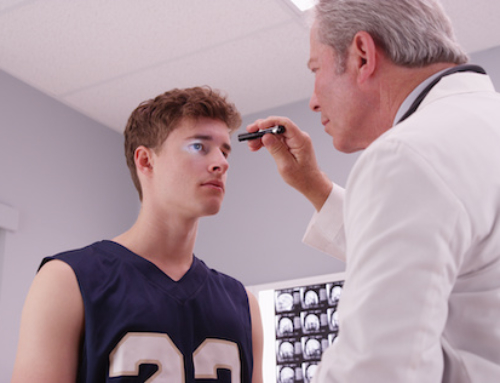In our increasingly active world, sports-related injuries are becoming more and more common. Even a minor sports injury can cause major disruption to the schedule and success of an athlete and their team. Being informed about sports injuries is one of the most effective ways to prevent them and stay at the top of your game all year long, so read on to learn more about four of the injuries most commonly seen in the world of sports.
Concussions
Most commonly affecting boxers, football players, and soccer players, concussions can vary in severity and are diagnosable through a variety of symptoms, primarily those concerning cognition. A concussion, or mild traumatic brain injury, occurs when a direct impact causes the brain to be jostled around too quickly, resulting in symptoms such as confusion, memory loss, nausea and vomiting, fatigue, and lack of coordination. More than three million concussions are diagnosed each year, and timely diagnosis and treatment is key to managing the symptoms and ensuring a speedy return to the field.
Knee Injuries

ACL Tears
The anterior cruciate ligament of the knee may tear as a result of a sudden twisting motion, which often happens in sports when a player is changing direction or is knocked over by an opposing teammate. While sprains of this major knee ligament may be treated with physical therapy, tears are more serious and often require a combination of arthroscopic surgery and ACL reconstruction, as well as physical therapy to heal properly.
Fractures
Fractures can occur anywhere around or within the knee joint, and can be quite painful and debilitating. This type of knee injury may be sustained as a result of serious falls or a direct impact to the joint. To treat a patellar fracture, your doctor may immobilize your knee using a brace or splint in order for it to be held in the correct position while it heals.
Dislocations
As a result of a serious incident during a game or intense physical activity, the femur and tibia may be separated, resulting in a knee dislocation. In similar situations, a patellar dislocation can occur wherein the kneecap becomes detached from the end of the femur. Knee dislocation can be detected due to the visible malformation of the knee cap, which is accompanied by pain, swelling, and the inability to walk. An orthopedic specialist will almost always treat this type of knee injury with either an arthroscopic or open knee surgery in which the damaged areas are manually repaired. Cartilage implantations or transfers may also be done during additional surgeries, and physical therapy is essential to the restoration of knee functionality and stability.
Meniscal Tears
A tear of the meniscus is a rather common knee injury, with approximately 200,000 cases occurring in the United States every year. This type of knee injury most often affects athletes participating in contact sports like basketball and football, and is sustained by forceful twisting of the knee joint which causes joint tissue to tear. Symptoms of a meniscal tear include swelling, stiffness, pain, and difficulty extending the leg.
Labral Injuries
The labrum is located within the shoulder and helps to stabilize the joint. This area of the shoulder is commonly damaged in sports due to a subluxation or dislocation. This can occur in any overhead or arm sport such as baseball, or weight lifting. Treatment varies on the amount of damage done and visualized through and MRI-arthrogram. Conservative treatment can include rest, medication, physical therapy, and corticosteroid injections Surgical management is completed via arthroscopy and requires extensive physical therapy post-operatively.
Achilles Tendinitis
The Achilles tendons are a strong band of fibrous tissue responsible for connecting the calf muscles to the heel bone. This area of the leg can be affected by a condition known as tendinitis, which involves inflammation or irritation of the heel and back of the leg. As the Achilles is the largest tendon in the body, tendinitis of this area can have a major impact on an athlete’s ability to play their sport, and is especially common among runners. While Achilles tendinitis causes the heel to be tender and painful, making the condition hard to ignore, it typically is resolved in a matter of days or weeks through the use of pain relievers, rest, and exercises prescribed by your doctor or physical therapist.
Orthopedic Sports Injury Treatment Near You
If you have recently experienced one of these common sports injuries, get back on your feet with the help of Dr. Roger N. Chams! Dr. Chams has been a trusted professional in the orthopedic field for over twenty years, and has performed more than 25,000 arthroscopic knee and shoulder operations throughout his career. Working out of numerous clinics in Illinois, Dr. Chams and his staff will work with you to formulate a treatment plan to tackle your sports injury. To schedule an appointment at an office near you, please contact us today!






